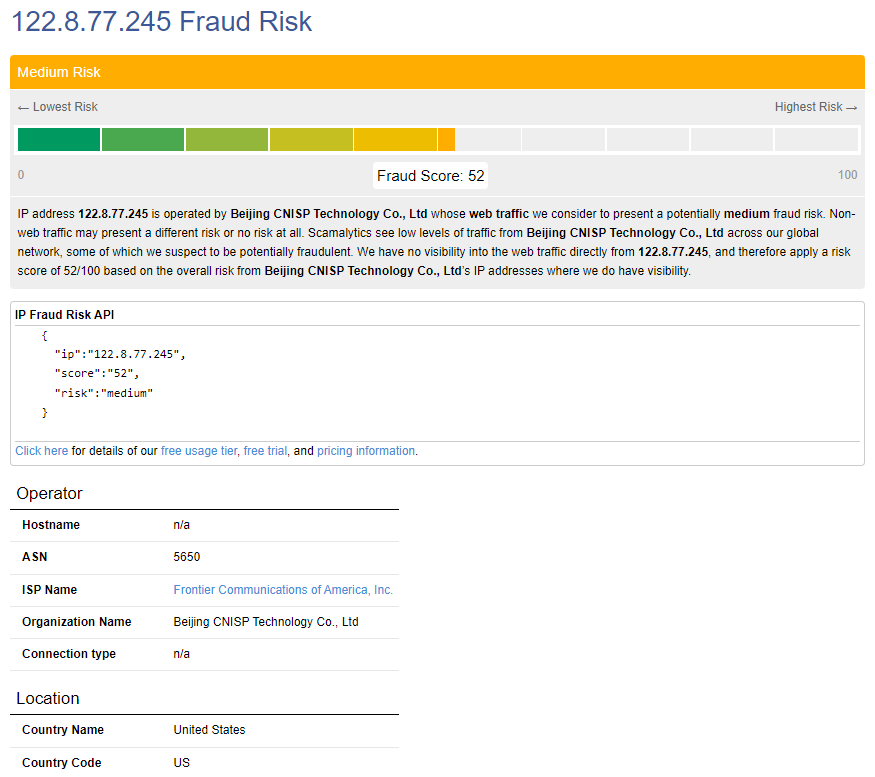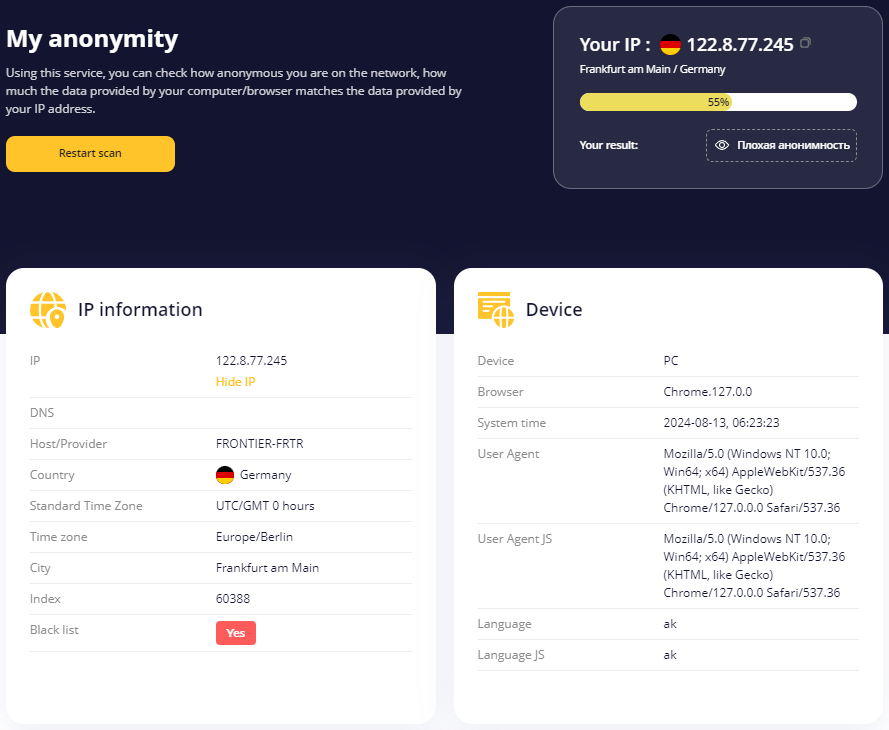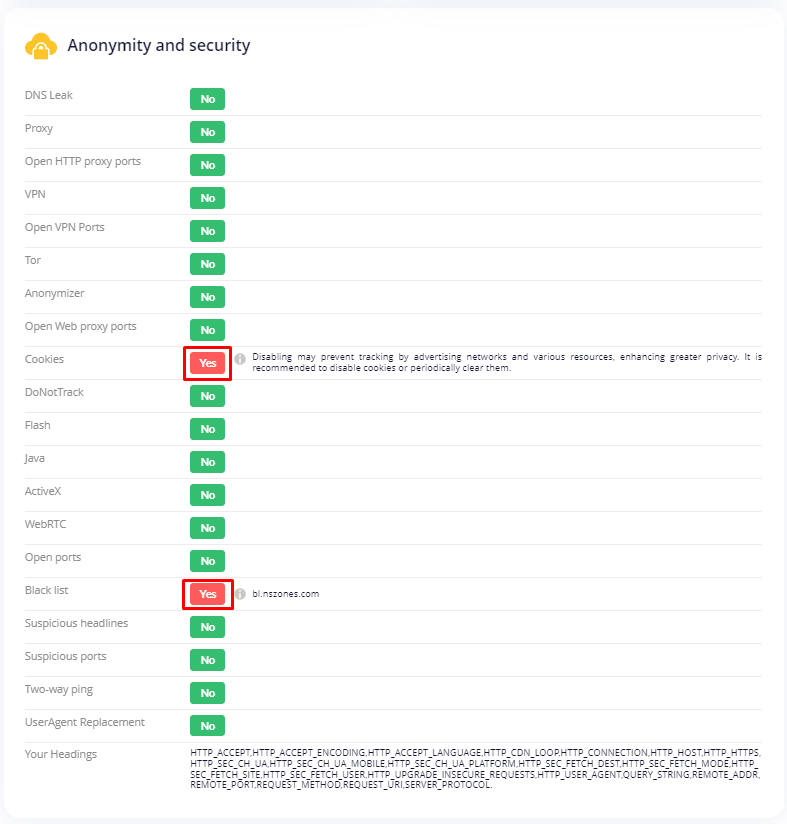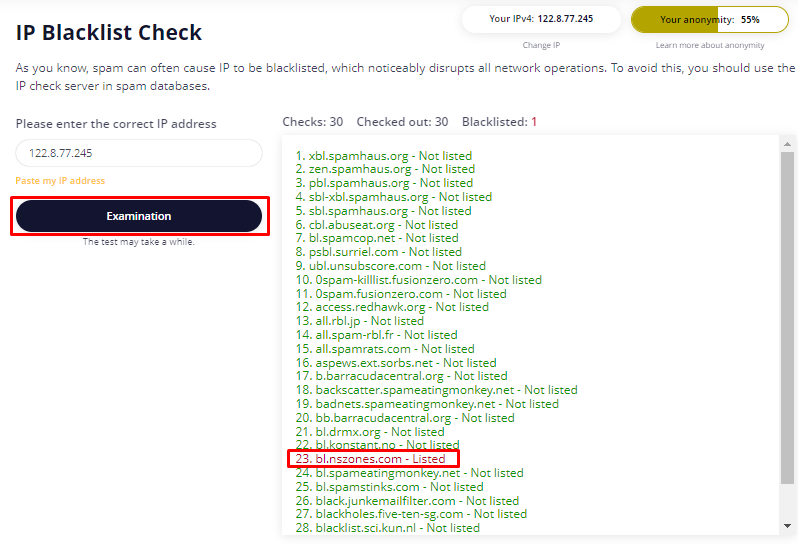IPv4
From $0.70 for 1 pc. 40 countries to choose from, rental period from 7 days.
IPv4
From $0.70 for 1 pc. 40 countries to choose from, rental period from 7 days.
IPv4
From $0.70 for 1 pc. 40 countries to choose from, rental period from 7 days.
IPv6
From $0.07 for 1 pc. 14 countries to choose from, rental period from 7 days.
ISP
From $1.35 for 1 pc. 21 countries to choose from, rental period from 7 days.
Mobile
From $14 for 1 pc. 14 countries to choose from, rental period from 2 days.
Resident
From $0.90 for 1 GB. 200+ countries to choose from, rental period from 30 days.
Use cases:
Use cases:
Tools:
Company:
About Us:
FraudScore is a metric used to evaluate the risk of fraud in digital transactions, taking into account various factors such as user behavior, traffic sources, and IP addresses. It employs complex machine learning algorithms to identify anomalies that might indicate suspicious activities, such as the use of proxy servers. This can be particularly useful in contexts like online advertising and digital marketing.
FraudScore also relates to tools that check IP addresses for signs of fraudulent activity, which are commonly used when selecting proxy servers. However, the reliability of FraudScore as a metric can sometimes be questionable. A significant concern is the transparency and origin of the IP address data used to calculate this score, which can affect the accuracy of the results.
This issue is particularly relevant when users employ proxy servers for legitimate reasons like privacy enhancement, geo-restriction bypass, or increased online security. In these cases, a high FraudScore might not necessarily indicate actual fraud but rather the use of a proxy, leading to potentially misleading risk assessments even when no fraudulent activities are present behind the IP address.
FraudScore has emerged as a crucial tool in the digital realm, where online transactions and interactions are abundant. Its primary function is to assess and manage fraud risks, helping to maintain trust between users and services. When a high FraudScore is detected, it can alert services to potential threats, enabling them to block or scrutinize suspicious activities further.
FraudScore is widely utilized in several key areas:
While FraudScore is a valuable tool, it is not advisable to rely on it exclusively for making final decisions. It represents just one of many risk assessment tools and should be interpreted within a broader context. Although it plays a significant role in cybersecurity, FraudScore should be considered as part of a comprehensive risk assessment strategy, rather than a standalone measure of an IP address’s trustworthiness.
The FraudScore process involves several key steps: collecting data (such as IP addresses, geolocation, and device information), analyzing behavior, detecting anomalies, and assigning a risk score. This score is intended to help companies gauge the likelihood of fraud and serve as a benchmark for decision-making. However, relying on FraudScore for IP addresses can be problematic due to several significant limitations:
These issues suggest that relying on FraudScore to assess fraud risk by IP addresses might not always be effective and could lead to misleading conclusions.
When assessing the risk associated with an IP address, it's beneficial to consider more comprehensive and accurate indicators that provide a clearer picture of its status:
These methods provide a more comprehensive and accurate assessment of an IP address's security and status than relying solely on a FraudScore check. Next, we will guide you through the process of checking these key parameters using various services.
As a demonstration, let's start by checking the FraudScore on the Scamalytics service. On the main page of this site, you can enter an IP address and see information about its risk level.

In the example shown, the IP address has a FraudScore of 52, which supposedly indicates that it is unreliable for serious manipulation on the Internet. However, the service does not specify the exact reasons for this rating, only mentioning that this provider does not have a large traffic flow on the network, which leads Scamalytics to assume that the IP address might be potentially fraudulent.
For comparison, let's check the same IP address using another service, ipqualityscore. Similar to the previous checker, you enter the IP address on the main page and observe the result.

This service shows a FraudScore of 89, which is much higher than the previous indicator, but like Scamalytics, it does not explain the basis for this high rating. It can be concluded that checks using popular services cannot provide accurate results and guarantee their reliability.
In situations where the reliability of an IP address is in question, it is advisable to check whether the IP is listed in spam databases or blacklists and to assess its general level of anonymity. For this, the “Anonymity check” tool can be utilized. Upon visiting the page with this tool, the check initiates automatically, and within a few seconds, it displays information about the level of anonymity. In this example, the proxy is rated as 55% anonymous.

What sets this service apart from others is the detailed explanation provided about the factors influencing the anonymity rating. For instance, the tool indicates that third-party websites can collect cookies, and if these cookies are not cleared or disabled, the level of anonymity cannot be increased. Moreover, it also reveals that the IP address in question is listed on a blacklist on one of the websites, further affecting its trustworthiness.

To obtain more detailed information on an IP address's presence in spam databases, the “IP Blacklist Check” tool is recommended. Simply enter the desired IP address into the provided field and click “Check”. The results, displayed within a few seconds, will indicate whether the IP is listed in any spam databases. In this example, out of 30 different spam databases, the checked address is listed in only one, which is generally a positive outcome. However, if higher reliability is needed, users can opt to check additional IP addresses to find a more trustworthy proxy.

While FraudScore can be a valuable tool for assessing risks in various services, particularly in financial transactions, its accuracy and reliability for checking IP addresses are often questionable. Results from FraudScore can vary and lack foundational reasoning, complicating the process of forming an objective assessment of IP quality. It is advisable to also evaluate IP addresses by their listings in blacklists and spam databases and by their level of anonymity to gather more reliable data.
